Zotac Gaming GeForce RTX 3080 Ti Amp Holo Review
It’s that time again! A new high end graphics card is always exciting and something to look forward to. Launching alongside the GeForce RTX 3080 Ti Founders Edition are a plethora of partner cards including the Zotac Gaming GeForce RTX 3080 Ti AMP Holo that we’ve got on hand right here. That name’s a bit of a mouthful so we’ll call it the RTX 3080 Ti Holo from here on.
As with any high-end GPU review in 2021, there’s a big asterisk next to it. Availability will continue to be scarce, and the pricing of cards will likely soar well beyond their already high RRP levels. Will the new hash rate limiter help to put the card in the hands of gamers instead of miners? Perhaps. So, let’s try to look at the card based on its merits. Supply and demand issues are industry wide, and not related to any one card. In six months, the situation could be a whole lot different.
In our review of the RTX 3080 Ti Founders Edition we've gone into full detail about what’s under the hood, but in brief, the RTX 3080 Ti comes with a new variant of the GA102 GPU found in the original GeForce RTX 3080 and GeForce RTX 3090.
The new GA102-225 variant comes with 10,240 CUDA cores. This compares to the 10,496 of the RTX 3090 and the 8,704 of the RTX 3080. It’s clear we’re looking at performance that’s closer to the 3090. The 12GB of VRAM is adequate for current games but with AMD offering 16GB cards at lower prices and the RTX 3090 coming with a whopping 24GB, it does leave you wanting a bit more on such an expensive card.
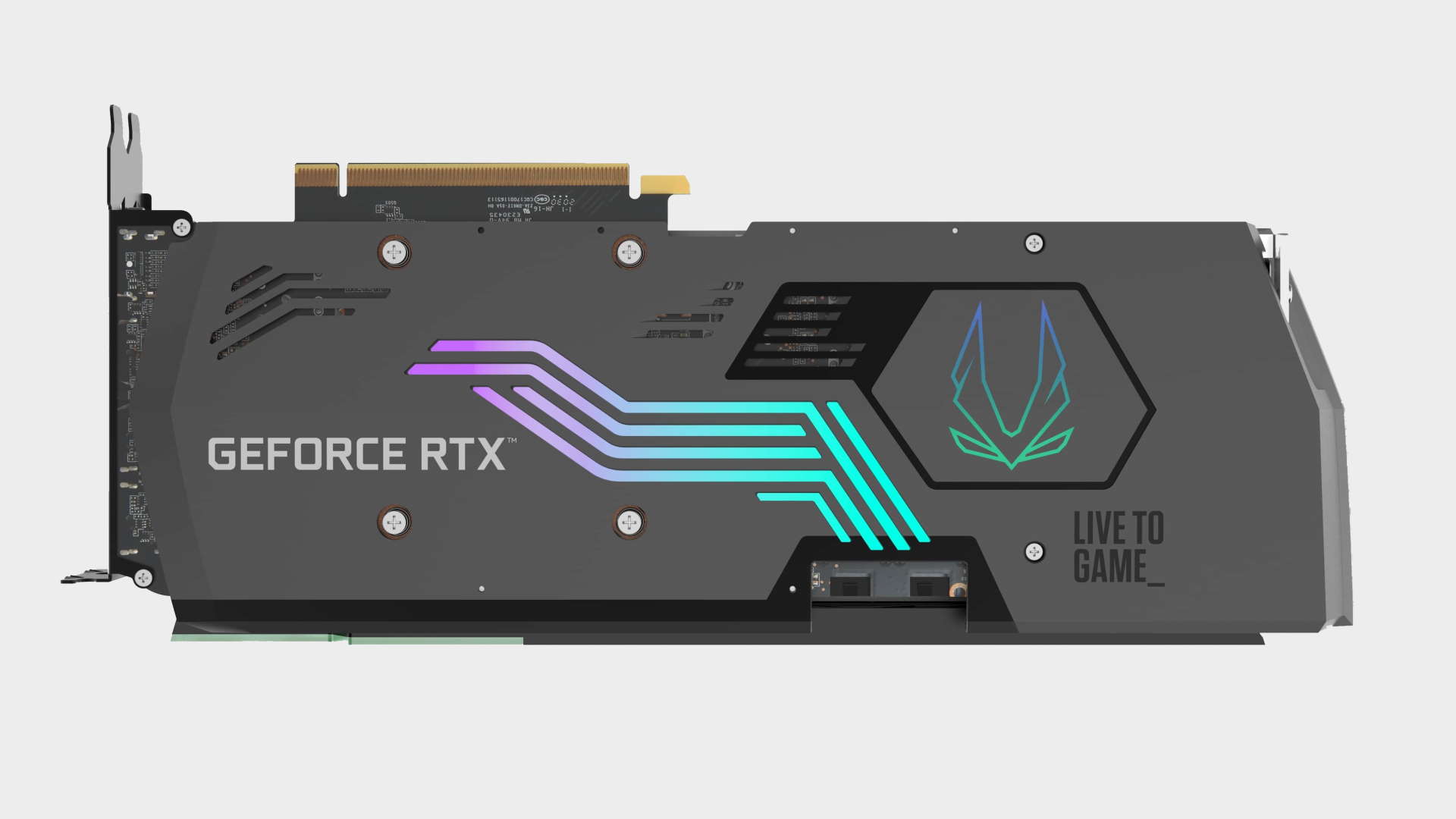
GPU: GA102-225
CUDA cores: 10,240
Boost clock: 1,710MHz
Memory: 12GB GDDR6X
Memory speed: 19Gbps
Ports: 3x DisplayPort 1.4a, 1x HDMI 2.1
Power: 2x 8-pin PCIe
TGP: 350W
Of course, you get all the goodies that the Ampere architecture is known for, with 2nd generation RT and 3rd generation Tensor cores for hardware accelerated ray tracing and the frame rate boosting wonder of DLSS. With more and more games offering support for these features, they are ever increasing in importance and the benefits they offer are clearly tangible.
The Zotac RTX 3080 Ti AMP Holo is Zotac’s flagship 3080 Ti, offering the highest clocks in its range, at least for now. It comes with a 1,710MHz boost clock which is a nice bump from the reference clock of 1,665MHz. The memory clock remains unchanged, however, but it's already pretty high. Real world pricing was unknown at the time of writing, however Zotac told us the card would be selling for a whopping $1,699 in the Zotac US store.
We sure do hope that that’s already factoring in a scarcity price premium because frankly that’s pretty crazy, and higher than a reference RTX 3090, which is hard to swallow. We’ll have to wait and see how it compares to the prices of other cards once they’re on sale.
The RTX 3080 Ti Holo takes up three slots and it’s quite long at 32cm, but its height is just under 132mm which helps with compatibility in slimmer cases. The top of the card is covered by a metallic sheen-like strip with an RGB light bar. There’s a solid metal backplate with even more RGB lighting. If you’re a fan of the reds, greens and blues, the Zotac Holo has you covered.
Outputs consist of the standard set of three v1.4 DisplayPorts plus a single HDMI 2.1 port. Two 8-pin PCIe power connectors provide juice to the card. These two connectors are not limiting, but with a 350W TDP level a third would be welcome. It would also allow a lot more headroom for playing with the power limits. The Zotac Holo allows just an extra 10%, or 385W, which is pretty conservative compared to the maximum limits offered by many other RTX 3080 Ti cards we've seen.
4K gaming performance
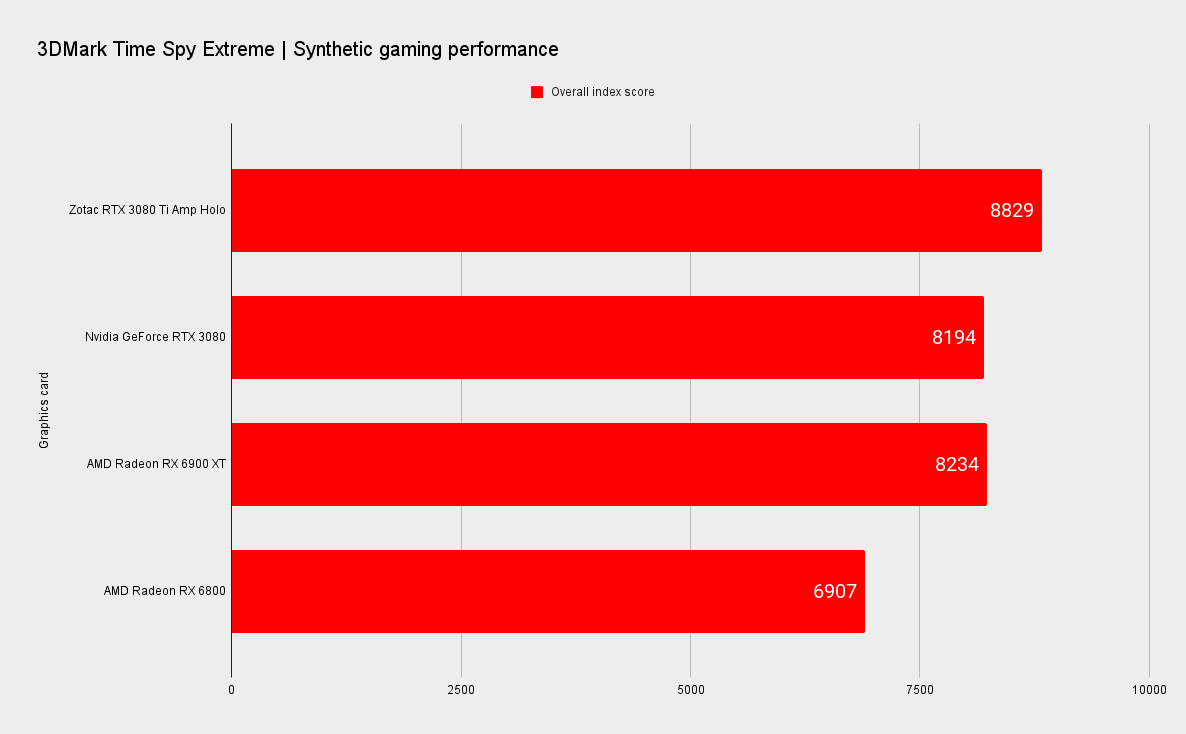
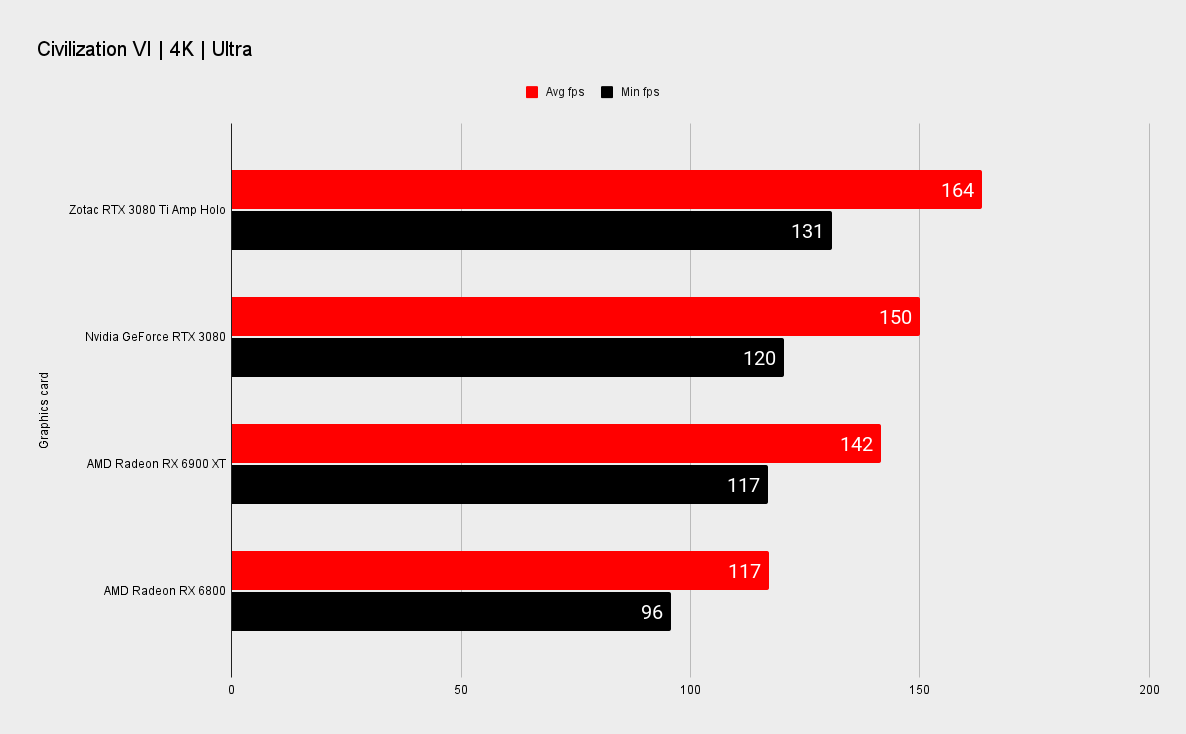
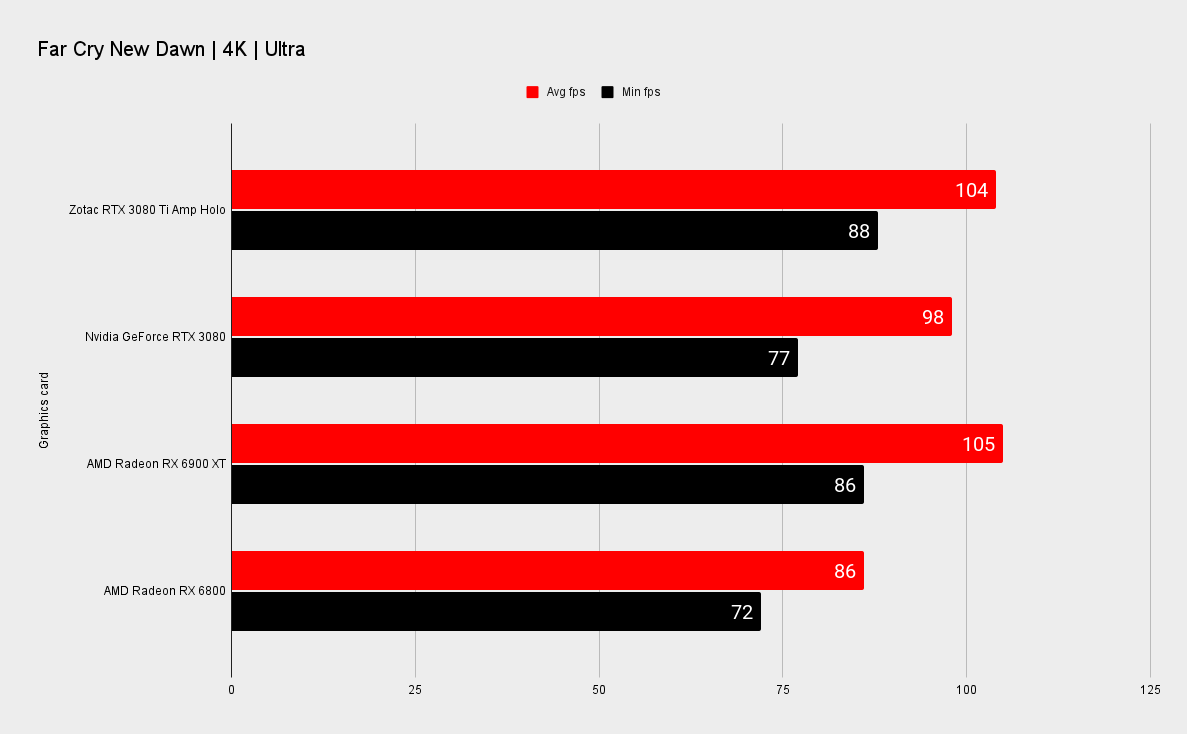
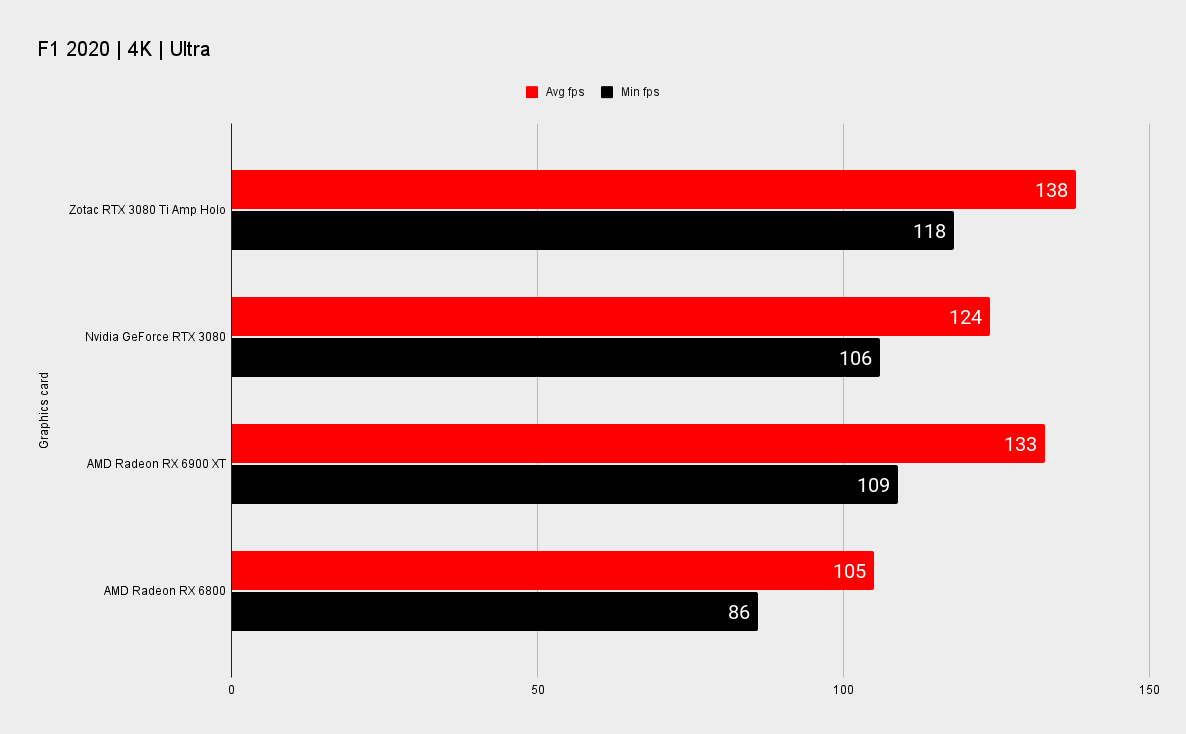
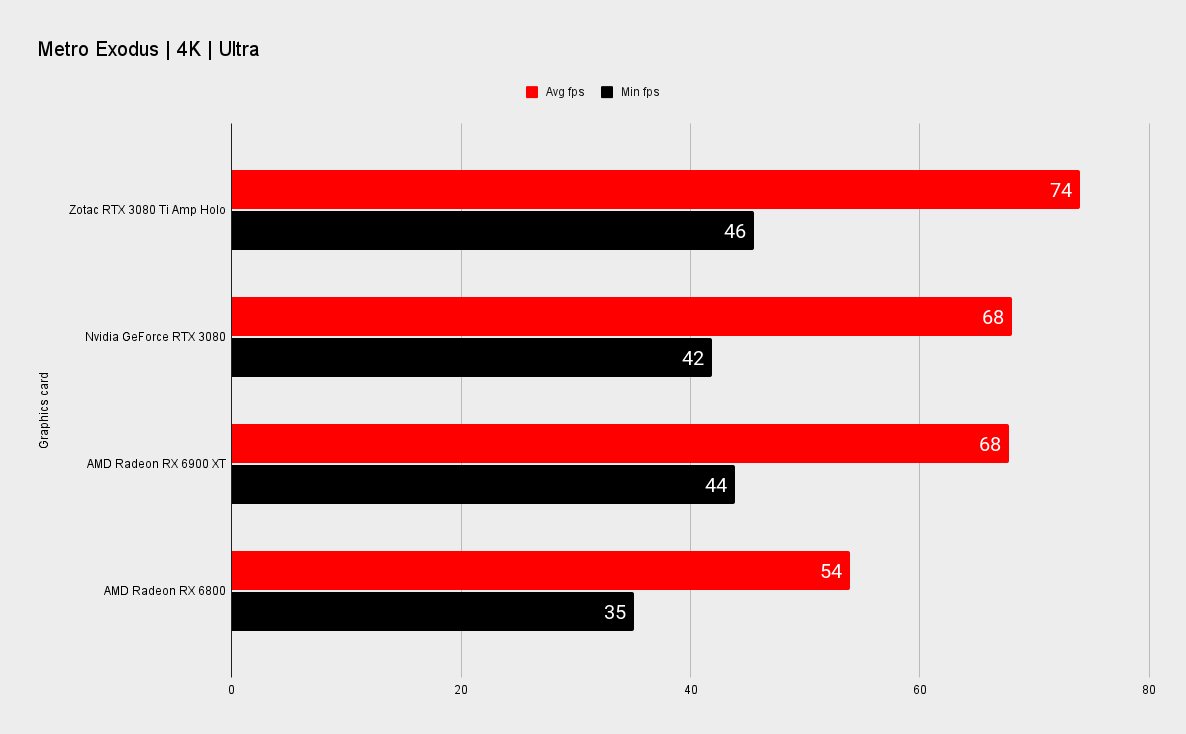
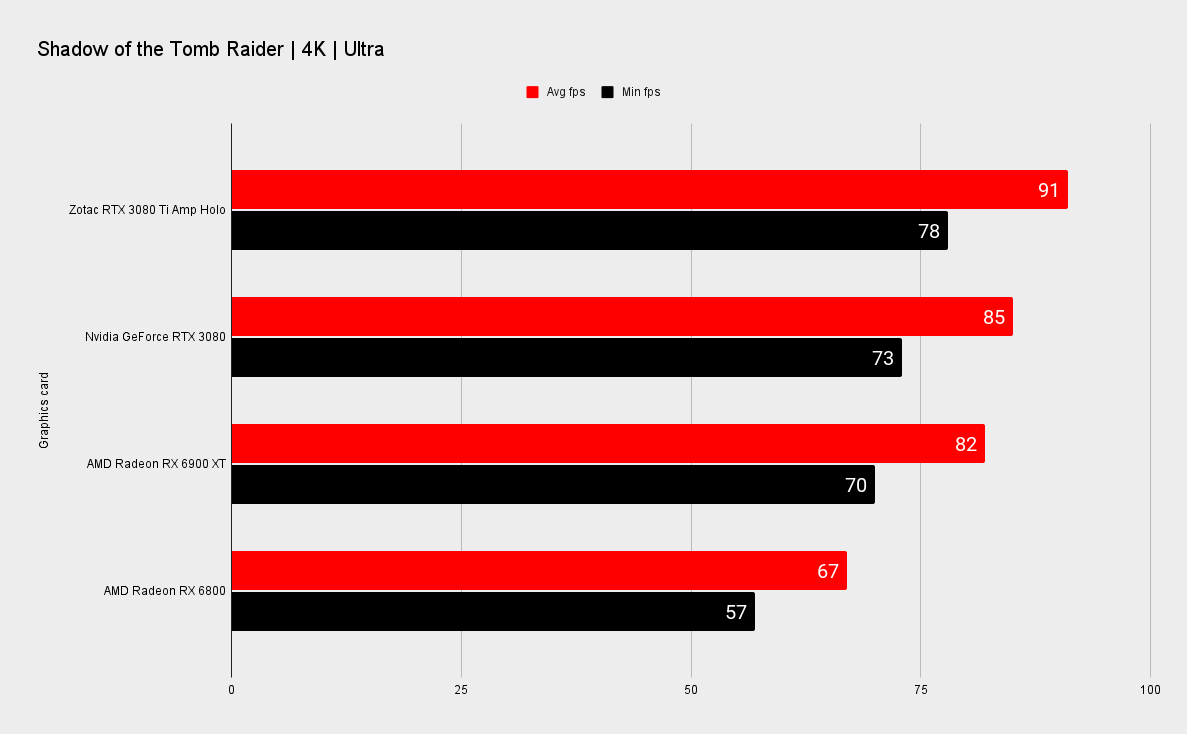
1440p gaming performance
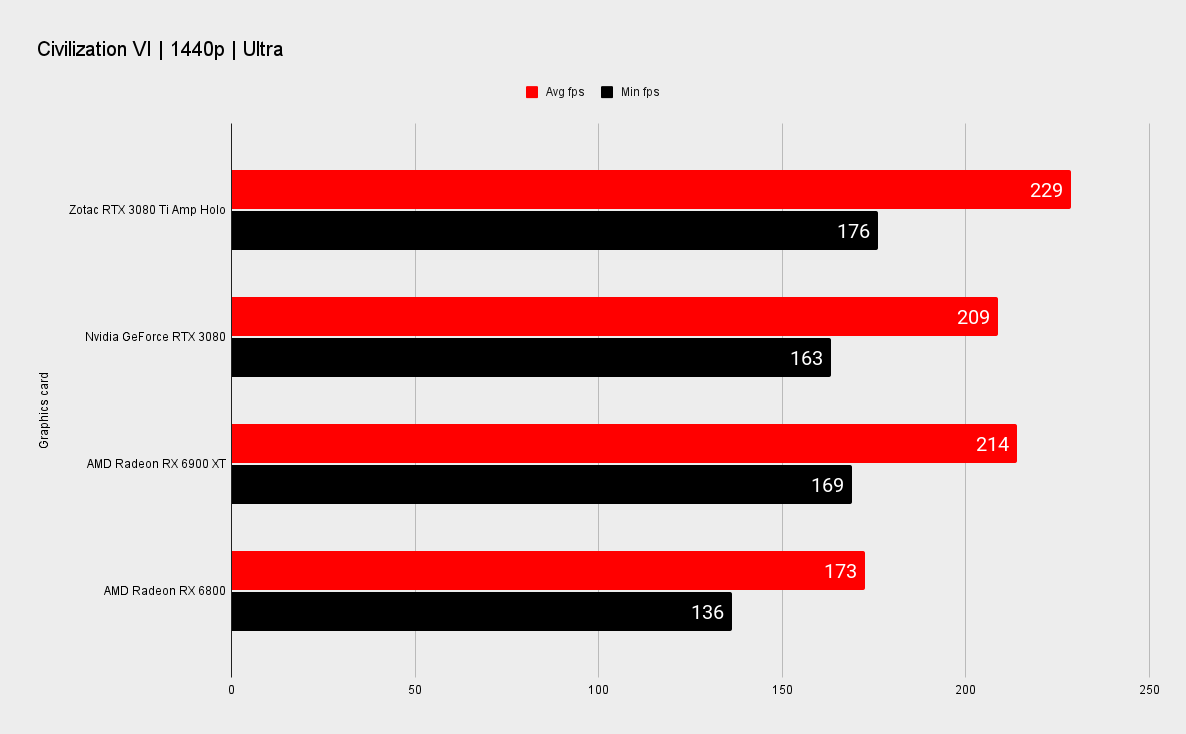
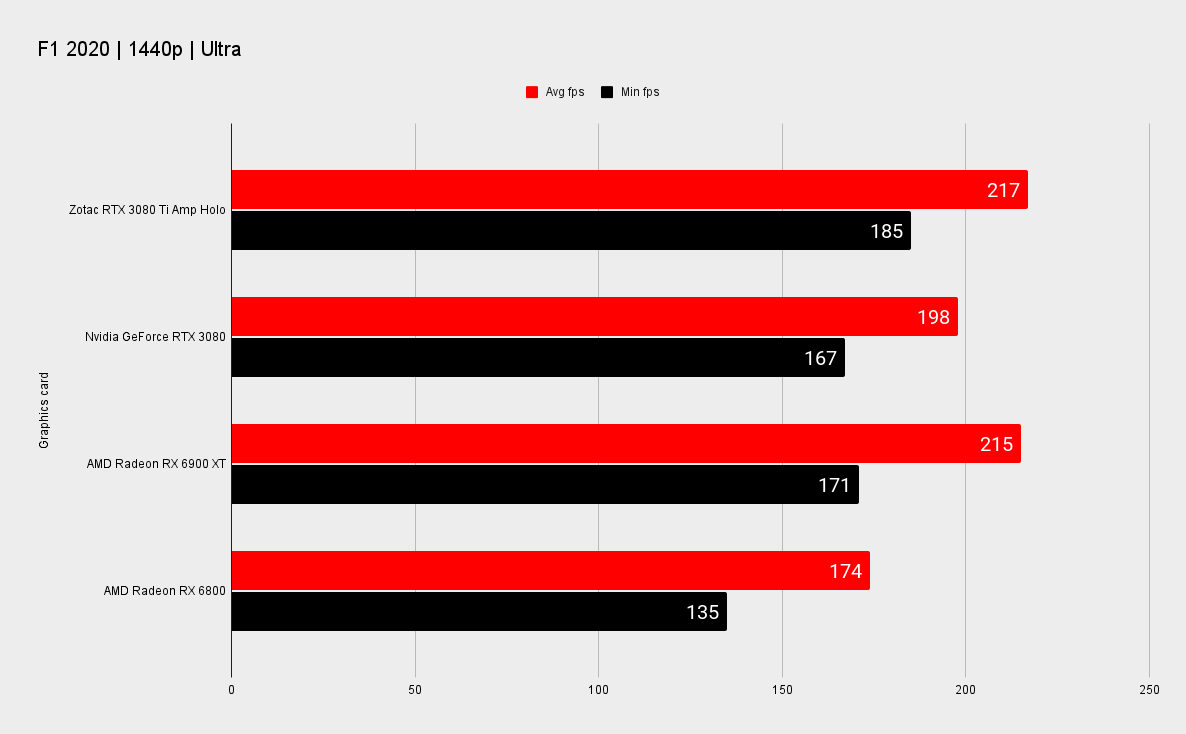
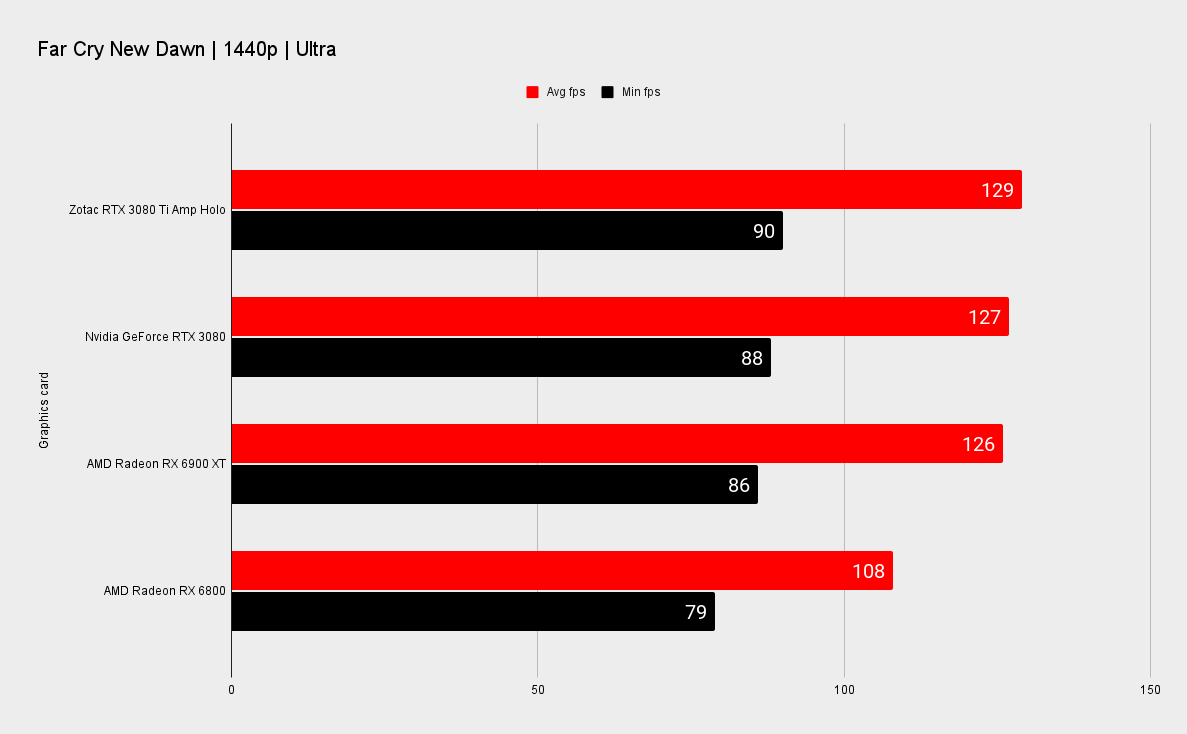
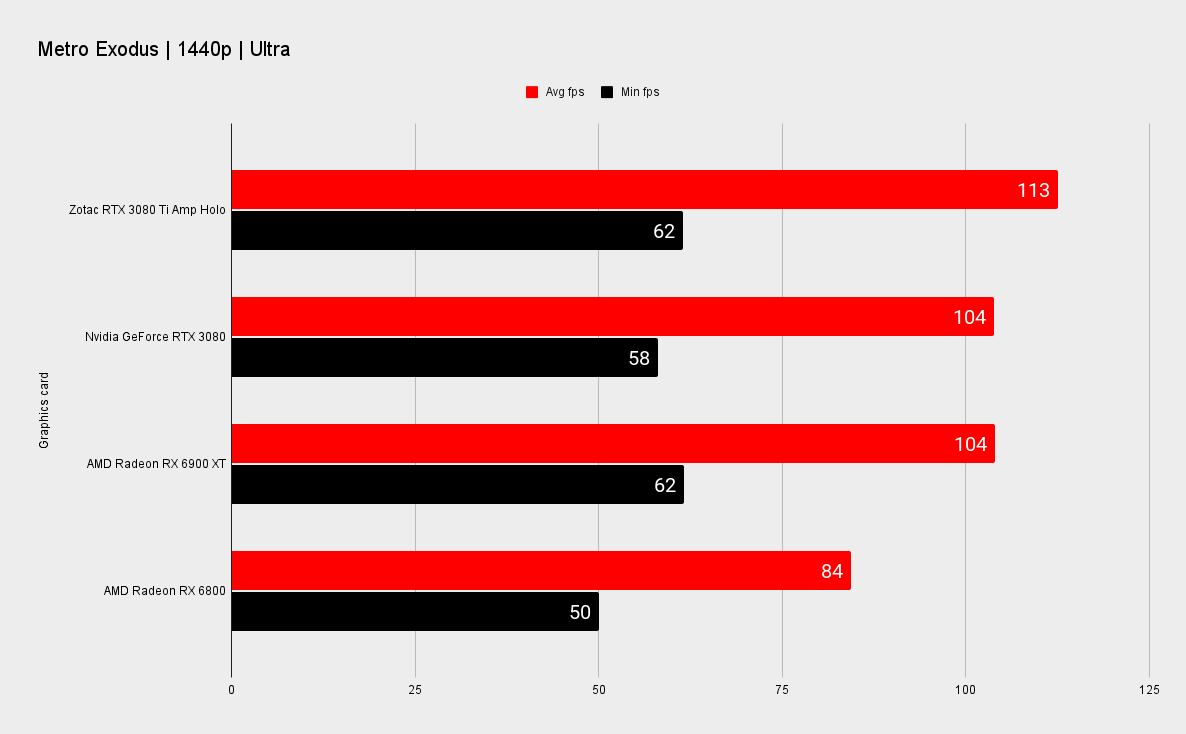
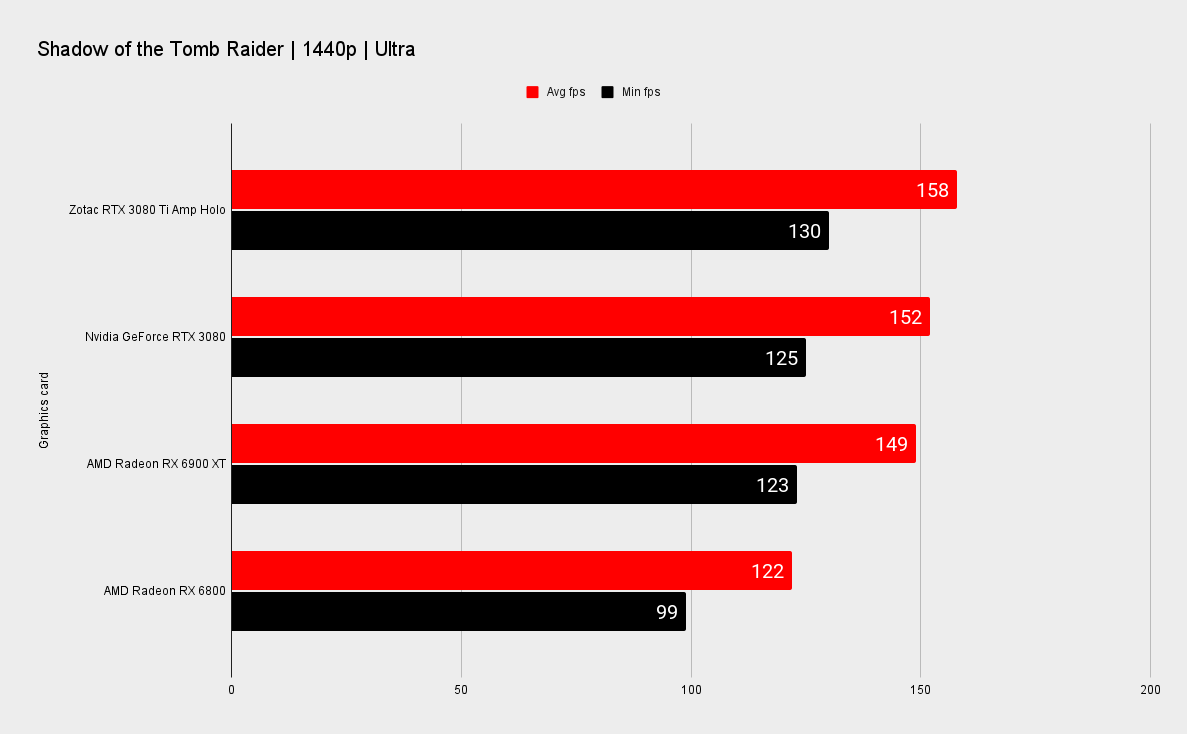
Ray tracing performance
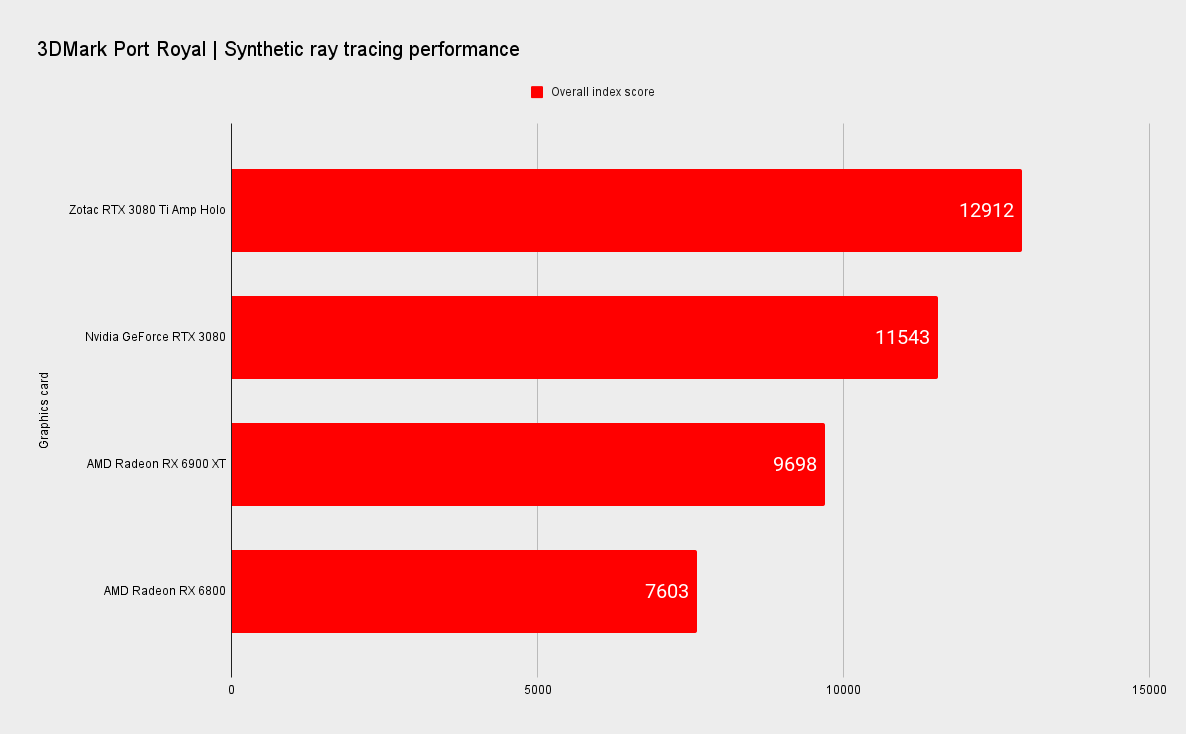
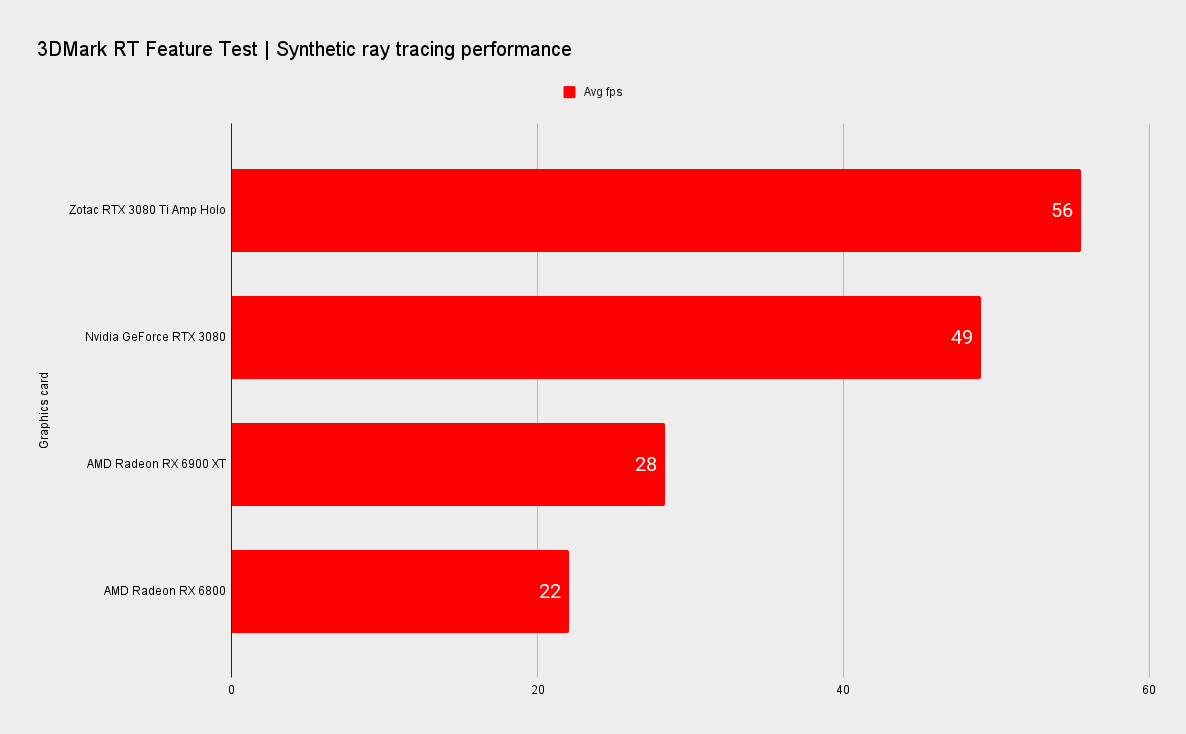
If you’re going to drop $1,699 on a card, you’ll want it to perform, and it does. It trades blows with the Radeon RX 6900 XT, and even the ultra-expensive new Navi XTXH variants, depending on the game. And of course AMD has no answer when it comes to ray tracing performance.
In Watch Dogs: Legion with RT, the Holo is well ahead of the RX 6900 XT. We look forward to testing AMDs upcoming FidelityFX Super Resolution, which will really help boost ray tracing performance for Radeon cards. But it's safe to say that right now, if you want to play one of the increasingly widely available ray traced games, then the 3080 Ti is where it’s at.
Zotac’s IceStorm 2.0 cooler as is large as you’d expect, though obviously some of the taller RTX 3080 Ti variants will offer more surface area and larger fans. The triple fan design features a stop mode when the card is idle. The main cooler also chills the memory while a smaller secondary heatsink cools the VRM, also adding rigidity to the card. The backplate also has some thermal pads for transferring heat, and not unexpectedly we noted that it gets hot. It’s a 350W card though, so good airflow is a must.
The way Nvidia’s Boost algorithm works means the advertised boost clocks can be misleading. Pleasantly misleading, however. The Zotac 3080 Ti Holo has a rated boost clock of 1,710MHz but during our testing we saw clocks holding as high as 1,840MHz during a long run.
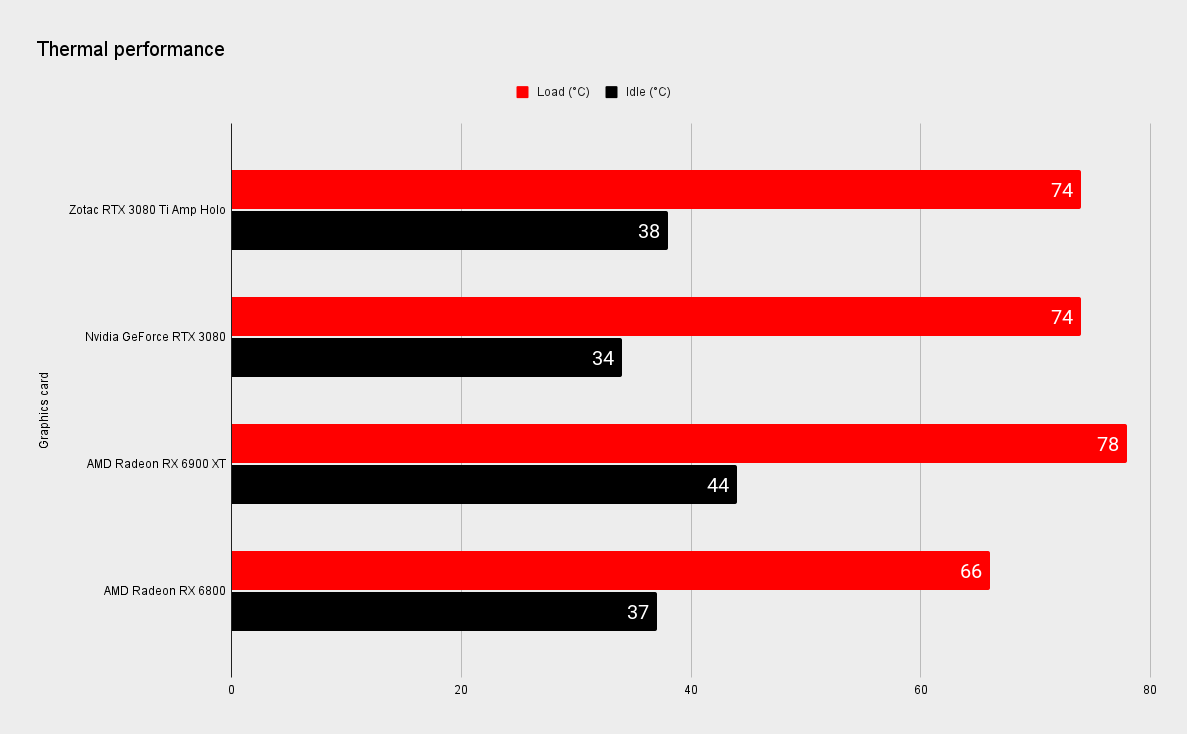
Though admittedly that’s in a cool room in an open-air test bed. It will be a bit warmer inside a case. The card settled into a temperature range of 74°C to 76°C, which is very good. The card is audible but not unreasonably so. It’s unlikely to match the larger coolers of the ever more expensive partner cards, but we think the Zotac IceStorm cooler is still pretty good.
As always, your temperature results will vary. A gamer in the deserts of Dubai will not get the same results as one in Alaska.
With regards to power, the card bounced of off its 350W TDP, with fluctuations around 330W to 350W. The GA102 GPU sure is a thirsty one. Let’s hope we don’t see 400W+ cards next generation.
Overclocking the Zotac RTX 3080 Ti Holo is much the same as any other Ampere card, which is to say it’s not really worth the hassle. We were able to set a quick and rough overclock of +180 MHz on the core with +100mv and the maximum 10% available power limit increase. But the card hits power limits which prevents the card from holding high clocks for long.
The memory fared better, with a 1,310MHz increase resulting in a boost in bandwidth from the stock 912.4 GB/s to 1037.6 GB/s. That’s a real decent hike. The end result was a score of 9284 in Time Spy Extreme. A 5% gain isn’t insignificant but in the end you’re still better off simply increasing the power limit, cranking up the fans and letting Nvidia’s Boost algorithm do its thing.
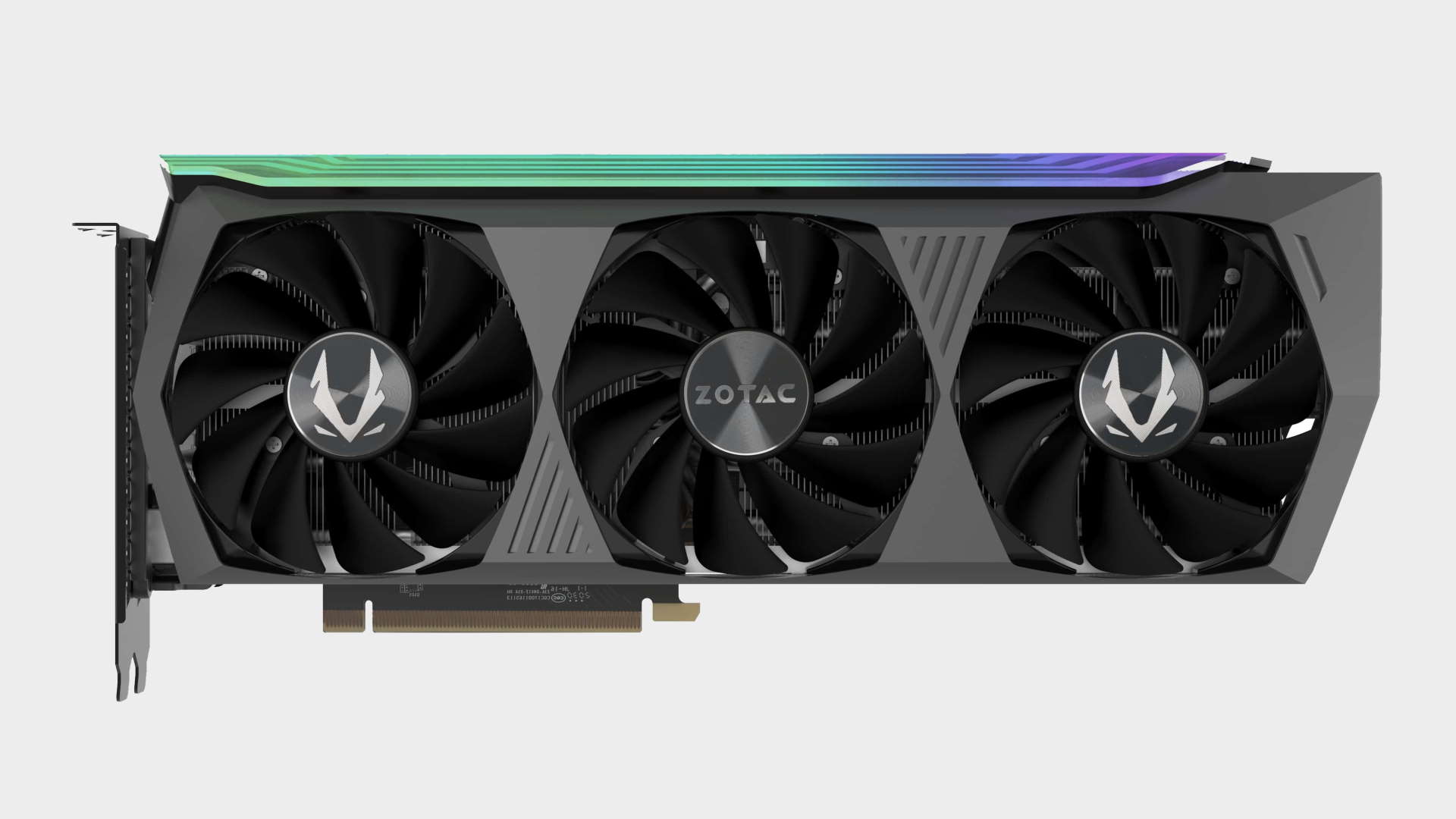
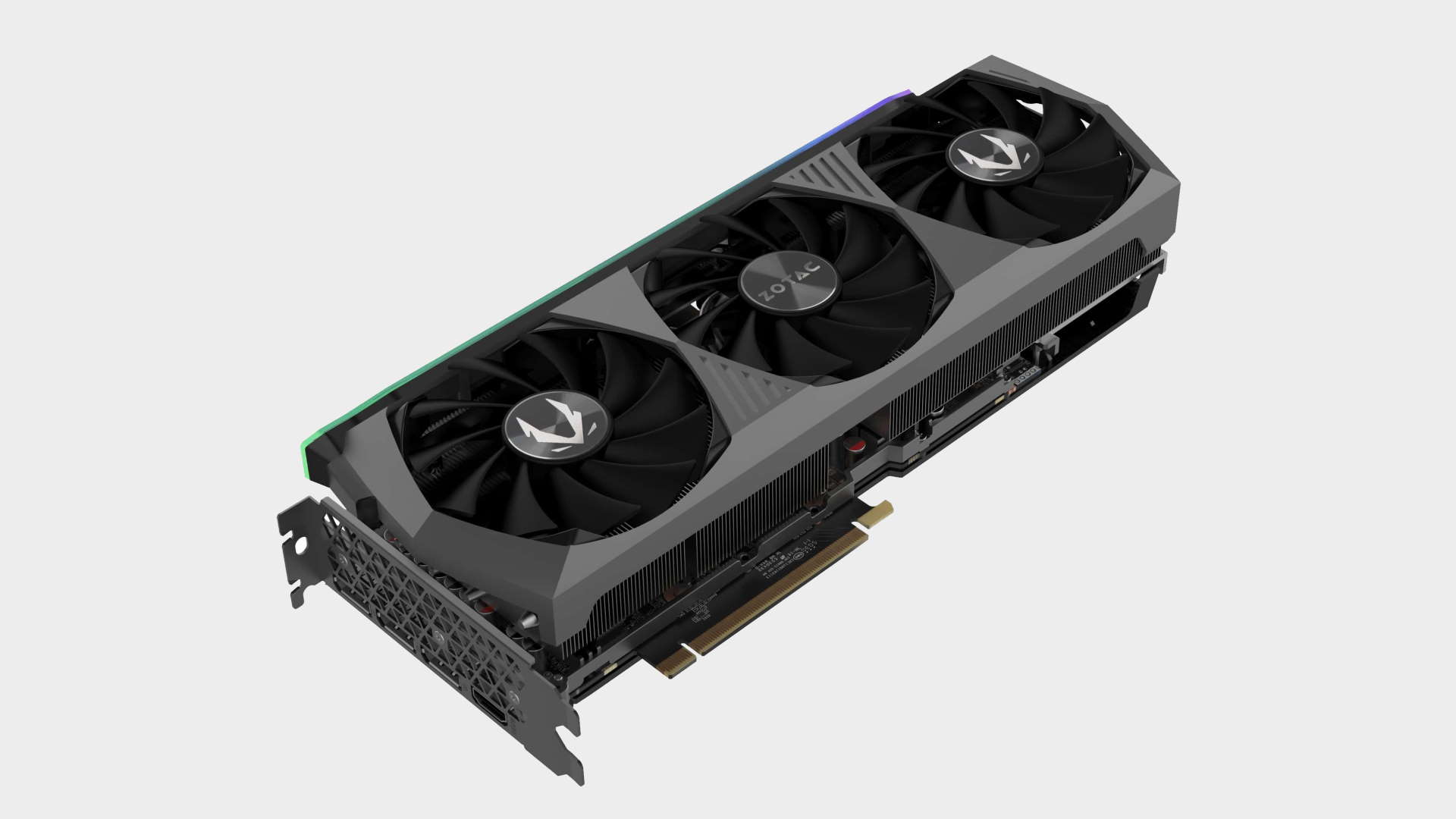
Drawing conclusions on flagship 2021 graphics cards is very difficult. The market needs some rehab, if not time in a padded cell. The RTX 3080 Ti RRP is supposed to be $1,199 but we all know that’s not going to last. But how high will it go? The Zotac RTX 3080 Ti Holo will list in the US store for an eye popping $1,699, and you know there will be other cards from different manufacturers going above even that. If you want a 4K powerhouse of a gaming PC, go for it, but, that kind of money buys a lot of things, including a console, games and a 4K TV to go with it. If you bought a, RTX 3080 at anywhere near its original RRP, you should no doubt consider yourself very lucky.
But the RTX 3080 Ti is a fantastic graphics card. It will smash out frames at 4K at maximum settings and gamers with high refresh rate monitors will love it. You get everything that the Ampere architecture has to offer with RT and DLSS adding ever increasing value. And the Zotac Holo is a worthy alternative to the quality Founder Edition card from Nvidia. It offers an out of the box OC, a quality cooler and RGB lovers should definitely check it out. But that isn’t enough. Let’s hope that $1,699 price decreases in the coming months. Then that asterisk we mentioned in the introduction can go from planet to pebble sized.

Post a Comment